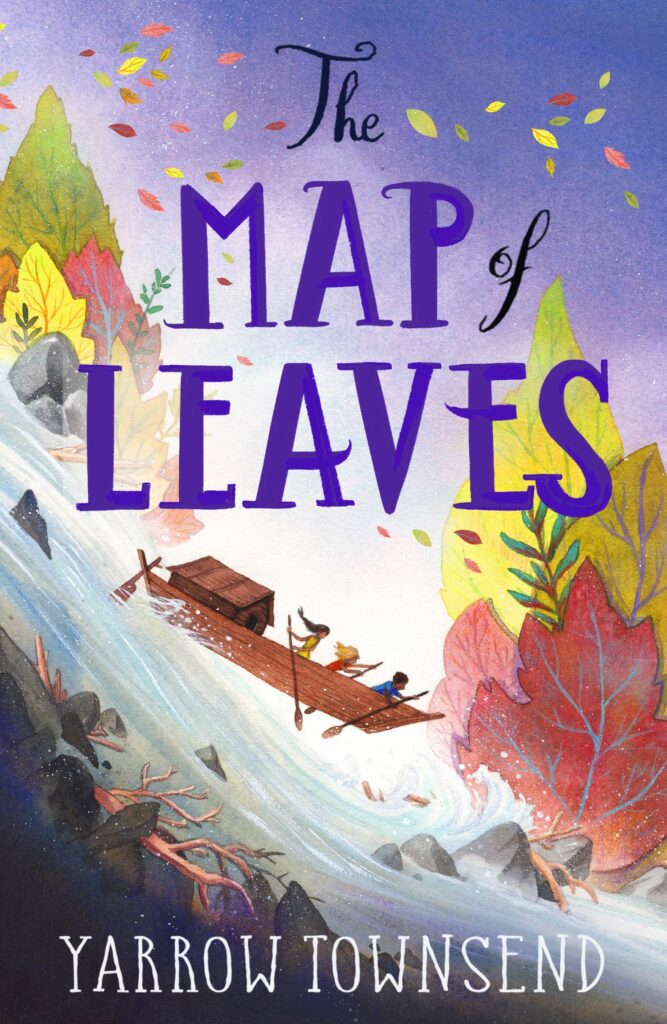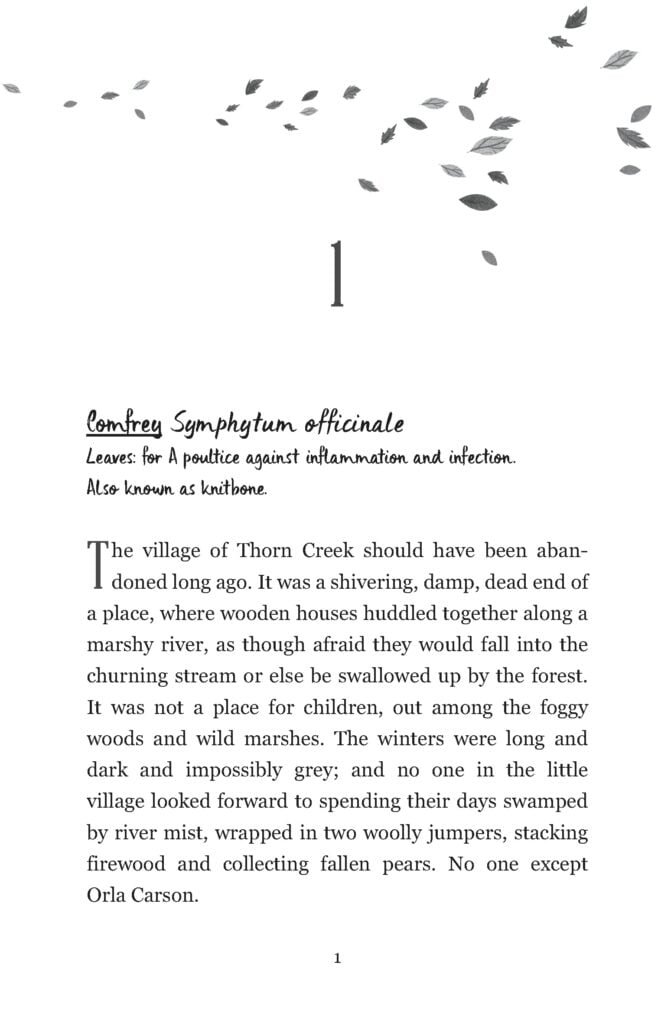Today we welcome children’s author Yarrow Townsend into The Reading Realm to talk to Ian Eagleton about her thrilling debut book THE MAP OF LEAVES!

Tell us about your book The Map of Leaves!
The Map of Leaves is the story of Orla Carson, who can talk to plants. She has spent her childhood in a little overgrown garden in a foggy village called Thorn Creek, with only the plants for company. They are her food, her medicine and her friends. Being quite stubborn, Orla doesn’t always listen to what the plants are telling her. But when they warn her about a mysterious sickness in the village that threatens to destroy her garden, she finds herself adventuring into the wild – along with two other children, to find a cure.
Your main character Orla is a brilliant creation! She’s feisty, fierce and brave. Who inspired her? Can you tell us about how she changes throughout the story?
Thank you! I’m very fond of Orla. She is fiercely independent and, perhaps to a fault, doesn’t think she needs help from anyone else, even when she is in trouble. Of course, she learns that asking for help isn’t all bad. But she’s still herself at the end of the story – I don’t believe we should always expect heroes to learn a perfect lesson and totally overcome their flaws. I think it’s important to recognise that our struggles are often ongoing!
I love the fact that the trees and plants can all speak to Orla and seem to have their own personalities! How did this come about?
I’ve spent a lot of time working outdoors doing practical, muddy jobs. Even when I’ve worked at a desk I’ve liked nothing better than stomping through misty rainy places. While I was surrounded by plants, I wondered what it would be like to spend so long in nature that every flutter of a leaf, every twitch of a branch could be understood as language. I also wanted to give a voice to some of the less-loved plants like nettles and brambles that I am really fond of. They deserve to be heard!

How did you feel when you saw the front cover by Marie-Alice Harel?
Marie-Alice is an incredibly skilled artist. I’d admired her work on Katherine Rundell’s books – Wolf Wilder in particular. She has done an amazing job capturing the wild river and the rapids on the cover for The Map of Leaves – and all the clever details on the inside cover like the keys and the cogs. Covers are the gateway to a story and Marie-Alice has worked magic here! I really recommend having a look at her other artwork too.
What really impressed me was the beautiful balance between quiet, lyrical moments in the book and fast-paced action. Was this a difficult balance to achieve?
The stories that have most captured my imagination always start with a really evocative setting—misty moors, racing rapids, dramatic sea-cliffs. Vivid descriptions can be a call to adventure. You want to find out what’s at the end of the winding woodland path. You want to imagine yourself chasing after the villain with the wind whipping around you. You want to see what’s around the bend in the river. Whenever I’m writing, I think about this. So, in all those quiet, still moments of reflection, there needs to be a whisper of the action to come.
Talk to us about the editing process of this book. Did you enjoy it? What he to be edited out of the story? What had to be developed and added?
With every story that I write, I feel like I’m learning as an author. I am especially glad that writing is a collaborative process. There are so many ways to tell a story—and so many potential adventures that Orla and her whispering plants could have had in The Map of Leaves – that having the experience of both my agent and editor helped me to prioritise, above all, the children reading the book and what would be exciting and adventurous for them. I always admire writers who can write a page-turner. As I mentioned above, as much as I love writing descriptively, I want to keep children hooked! Lots and lots gets edited out in the process, but it’s always for the benefit of a better story. In one version, Captain was going to come along for the whole adventure – but getting him into the boat proved problematic.
Do you think you will return to Orla’s world at any point?
I am so fond of Orla and her plants. Her garden is at the heart of the story, really. The story takes place in September, just as the seasons are beginning to change, and Orla is harvesting fruit and medicines. I’d love to see her garden throughout the year – how does she manage in winter, for example? I love her resourcefulness and now that he has new friends, I like to imagine them working together in the garden and stopping for acorn-coffee and roasted plums to keep warm. Perhaps there are more stories hidden in that garden!
Finally, can you describe The Map of Leaves in three words?
Wild river adventure!

